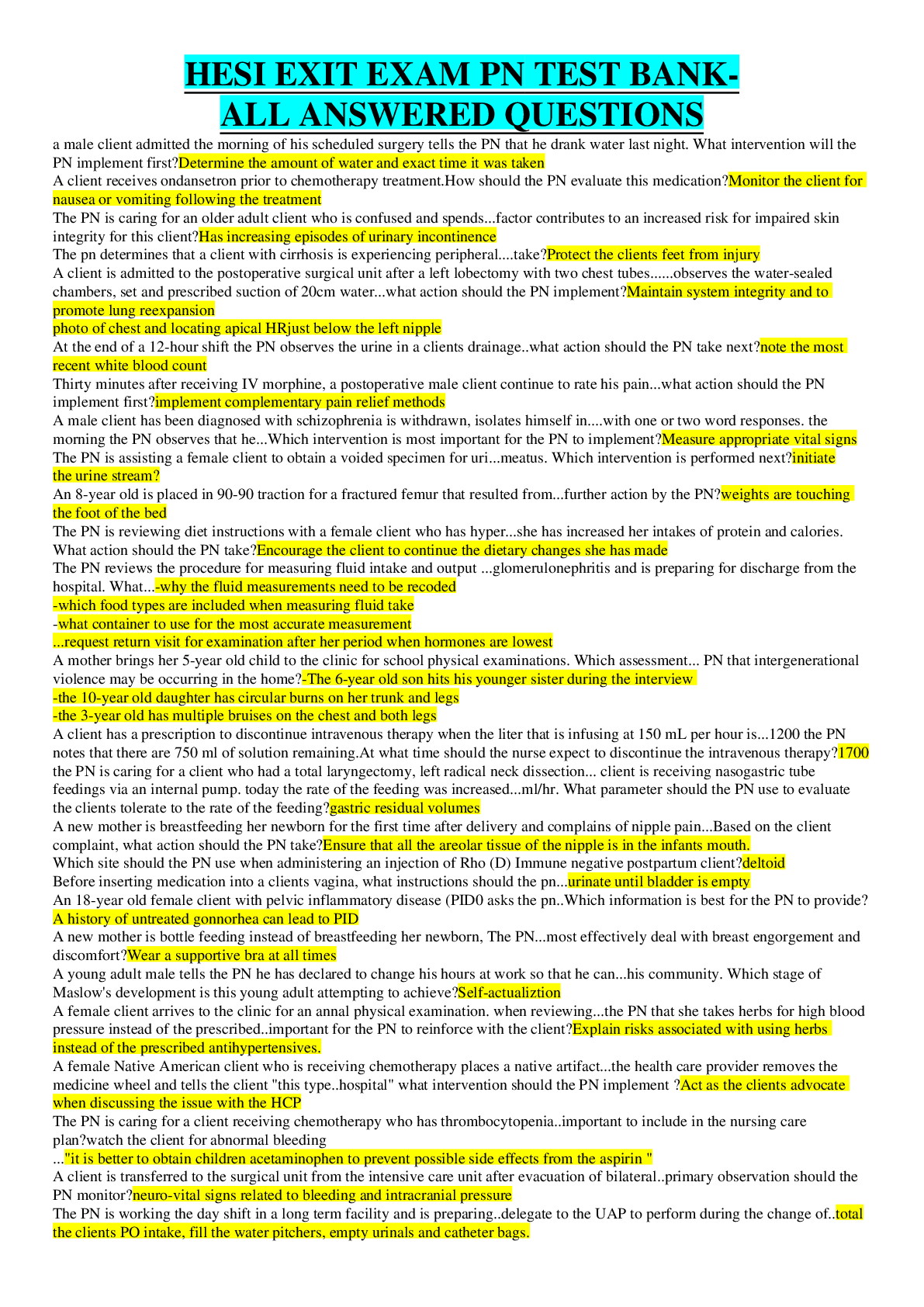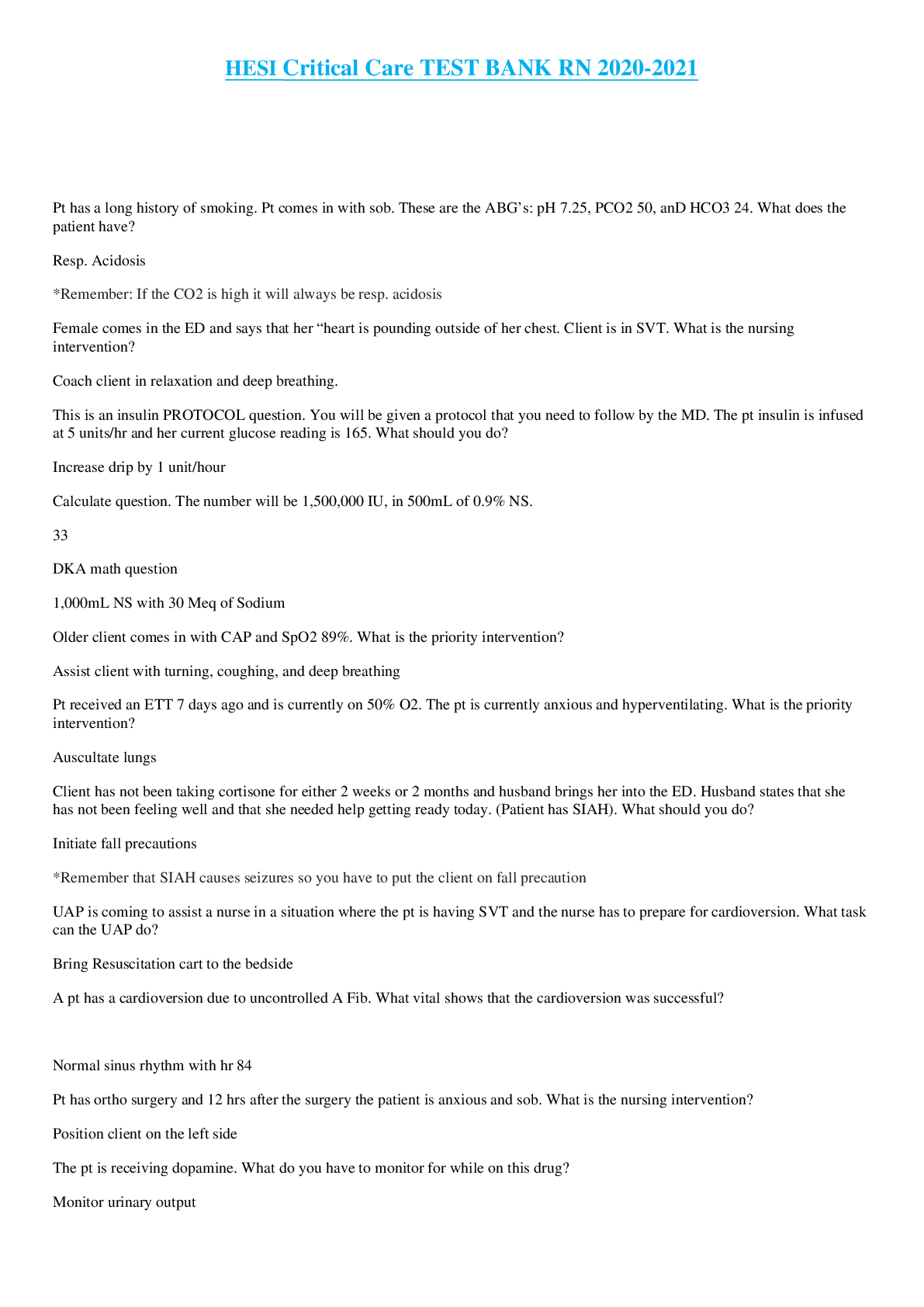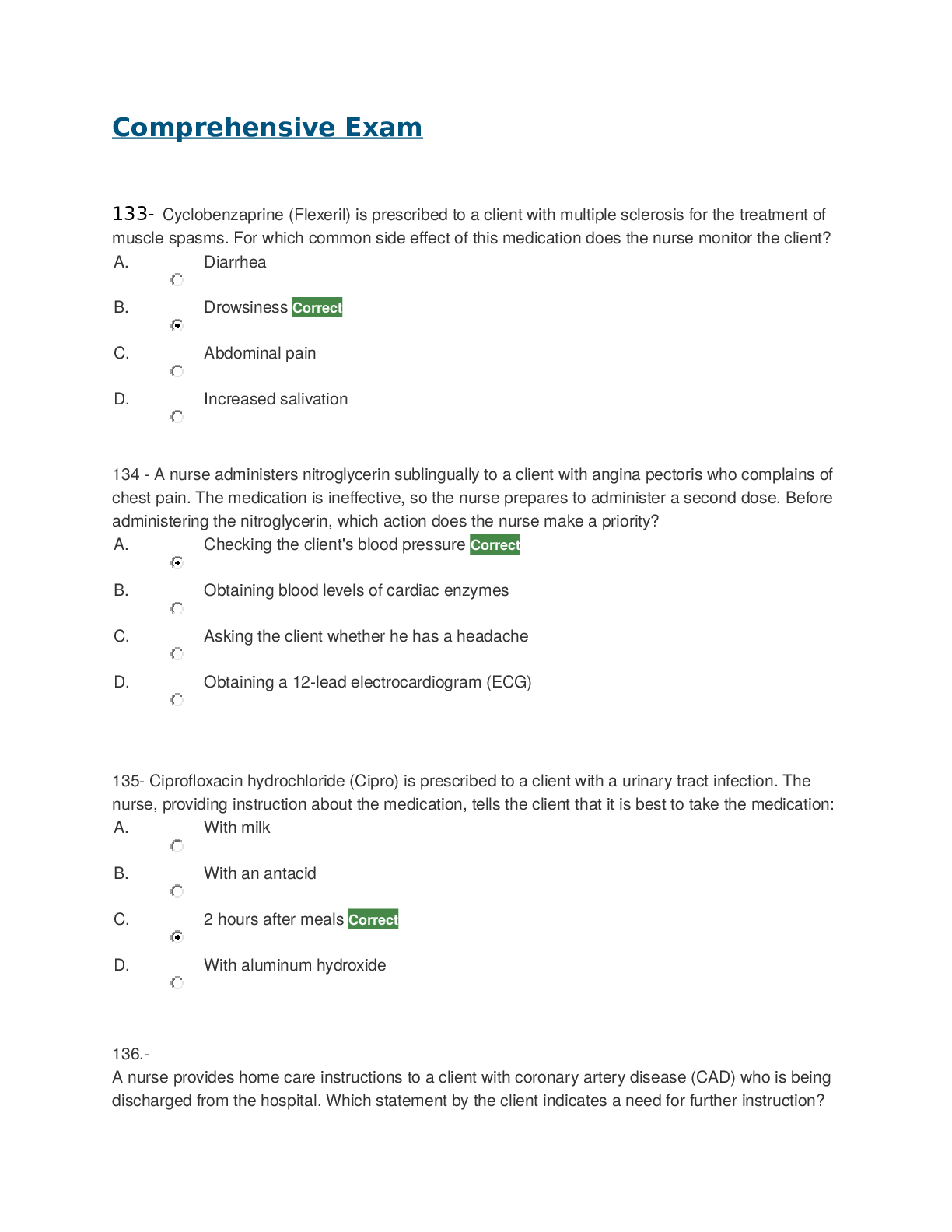*NURSING > HESI > HESI FUNDAMENTALS -2020 PRACTICE QUESTIONS AND ANSWERS (LATEST-2020): (ANSWERS VERIFIED 100% CORRECT (All)
HESI FUNDAMENTALS -2020 PRACTICE QUESTIONS AND ANSWERS (LATEST-2020): (ANSWERS VERIFIED 100% CORRECT)
Document Content and Description Below
Hesi Fundamentals Practice Questions Fundamentals Hesi 1. The home health nurse visits an elderly female client who had a brain attack three months ago and is now able to ambulate with the assista... nce of a quad cane. Which assessment finding has the greatest implications for this client's care? • The husband, who is the caregiver, begins to weep when the nurse asks how he is doing. • The client tells the nurse that she does not have much of an appetite today. • The nurse notes that there are numerous scatter rugs throughout the house. Correct • The client's pulse rate is 10 beats higher than it was at the last visit one week ago. Scatter rugs (C) pose a safety hazard because the client can trip on them when ambulating, so this finding has the greatest significance in planning this client's care. Psychological support of the caregiver (A) is a less acute need than that of client safety. The nurse needs to obtain more information about (B), but this is not a safety issue. (D) is not a significant increase, and additional assessment might provide information about the reason for the increase (anxiety, exercise, etc.). 2. The nurse is digitally removing a fecal impaction for a client. The nurse should stop the procedure and take corrective action if which client reaction is noted? • Temperature increases from 98.8° to 99.0° F. • Pulse rate decreases from 78 to 52 beats/min. Correct • Respiratory rate increases from 16 to 24 breaths/min. • Blood pressure increases from 110/84 to 118/88 mm/Hg. Parasympathetic reaction can occur as a result of digital stimulation of the anal sphincter, which should be stopped if the client experiences a vagal response, such as bradycardia (B). (A, C, and D) do not warrant stopping the procedure. 3. The nurse is providing passive range of motion (ROM) exercises to the hip and knee for a client who is unconscious. After supporting the client's knee with one hand, what action should the nurse take next? • Raise the bed to a comfortable working level. • Bend the client's knee. • Move the knee toward the chest as far as it will go. • Cradle the client's heel. Correct Passive ROM exercise for the hip and knee is provided by supporting the joints of the knee and ankle (D) and gently moving the limb in a slow, smooth, firm but gentle manner. (A) should be done before the exercises are begun to prevent injury to the nurse and client. (B) is carried out after both joints are supported. After the knee is bent, then the knee is moved toward the chest to the point of resistance (C) two or three times. 4. A client who has moderate, persistent, chronic neuropathic pain due to diabetic neuropathy takes gabapentin (Neurontin) and ibuprofen (Motrin, Advil) daily. If Step 2 of the World Health Organization (WHO) pain relief ladder is prescribed, which drug protocol should be implemented? • Continue gabapentin. Correct • Discontinue ibuprofen. • Add aspirin to the protocol. • Add oral methadone to the protocol. Based on the WHO pain relief ladder, adjunct medications, such as gabapentin (Neurontin), an antiseizure medication, may be used at any step for anxiety and pain management, so (A) should be implemented. Nonopiod analgesics, such as ibuprofen (A) and aspirin (C) are Step 1 drugs. Step 2 and 3 include opioid narcotics (D), and to maintain freedom from pain, drugs should be given around the clock rather than by the client s PRN requests. 5. The nurse is preparing to irrigate a client's indwelling urinary catheter using an open technique. What action should the nurse take after applying gloves? • Empty the client's urinary drainage bag. • Draw up the irrigating solution into the syringe. Correct • Secure the client's catheter to the drainage tubing. • Use aseptic technique to instill the irrigating solution. To irrigate an indwelling urinary catheter, the nurse should first apply gloves, then draw up the irrigating solution into the syringe (B). The syringe is then attached to the catheter and the fluid instilled, using aseptic technique (D). Once the irrigating solution is instilled, the client's catheter should be secured to the drainage tubing (C). The urinary drainage bag can be emptied (A) whenever intake and output measurement is indicated, and the instilled irrigating fluid can be subtracted from the output at that time. 6. Which client care requires the nurse to wear barrier gloves as required by the protocol for Standard Precautions? • Removing the empty food tray from a client with a urinary catheter. • Washing and combing the hair of a client with a fractured leg in traction. • Administering oral medications to a cooperative client with a wound infection. [Show More]
Last updated: 1 year ago
Preview 1 out of 16 pages

Reviews( 0 )
Document information
Connected school, study & course
About the document
Uploaded On
Oct 14, 2020
Number of pages
16
Written in
Additional information
This document has been written for:
Uploaded
Oct 14, 2020
Downloads
0
Views
145

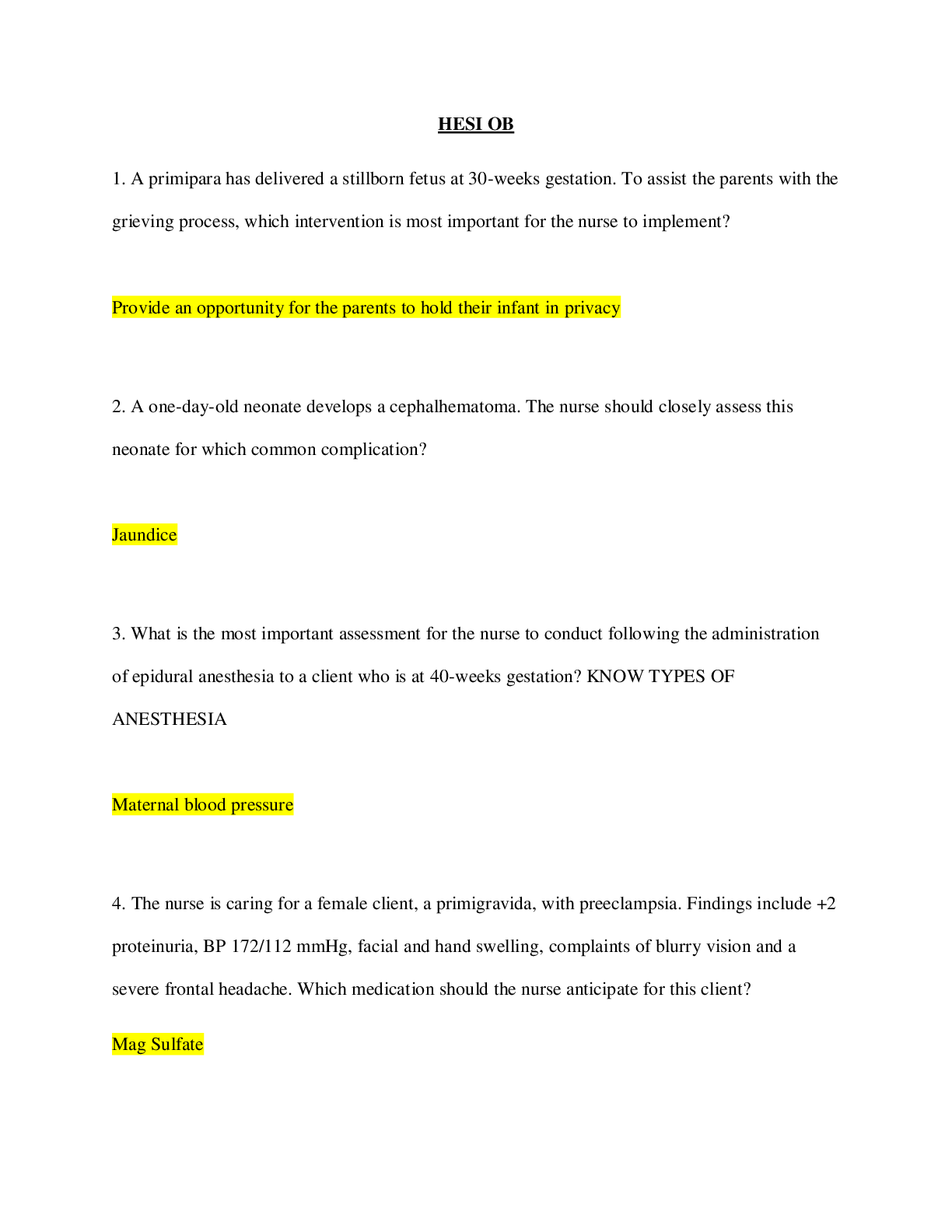
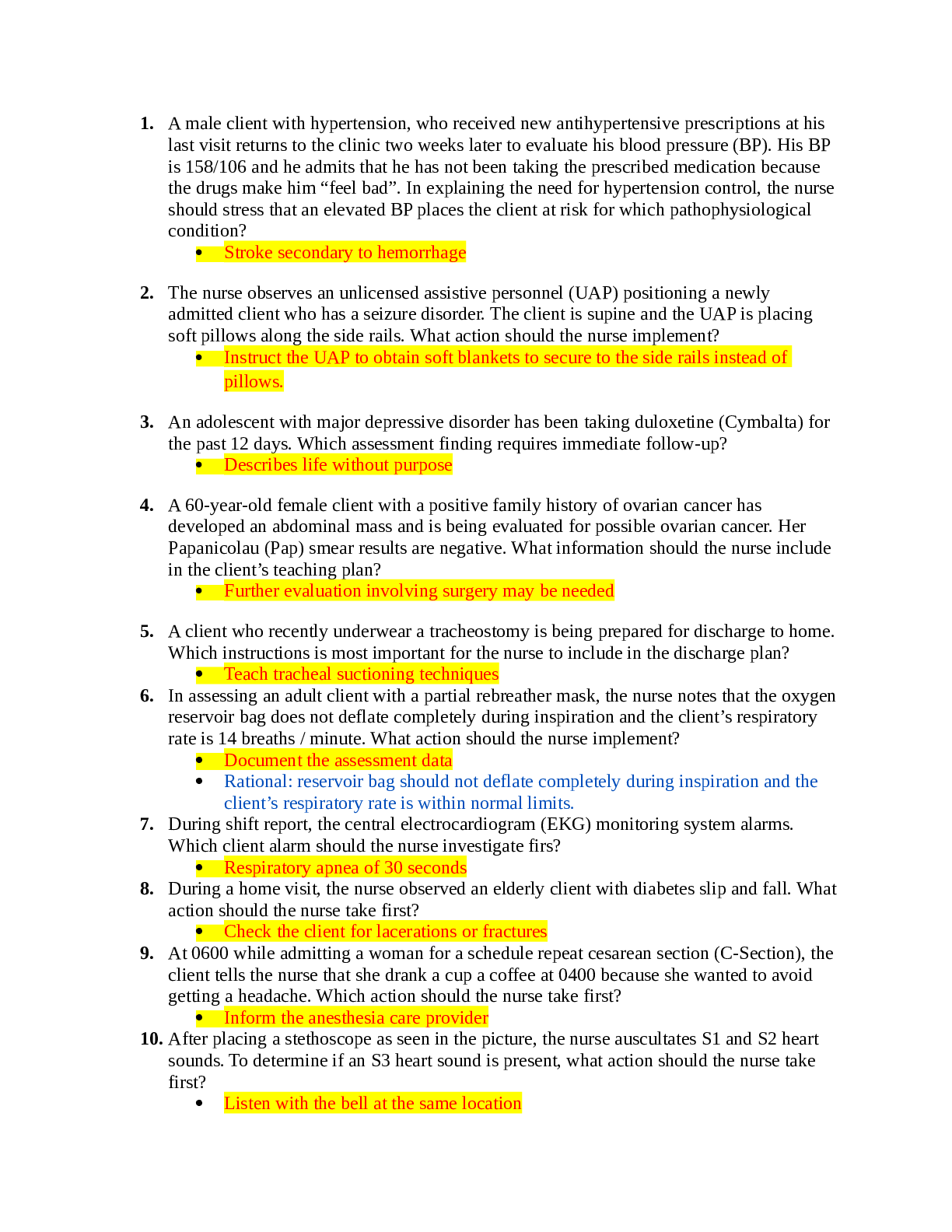

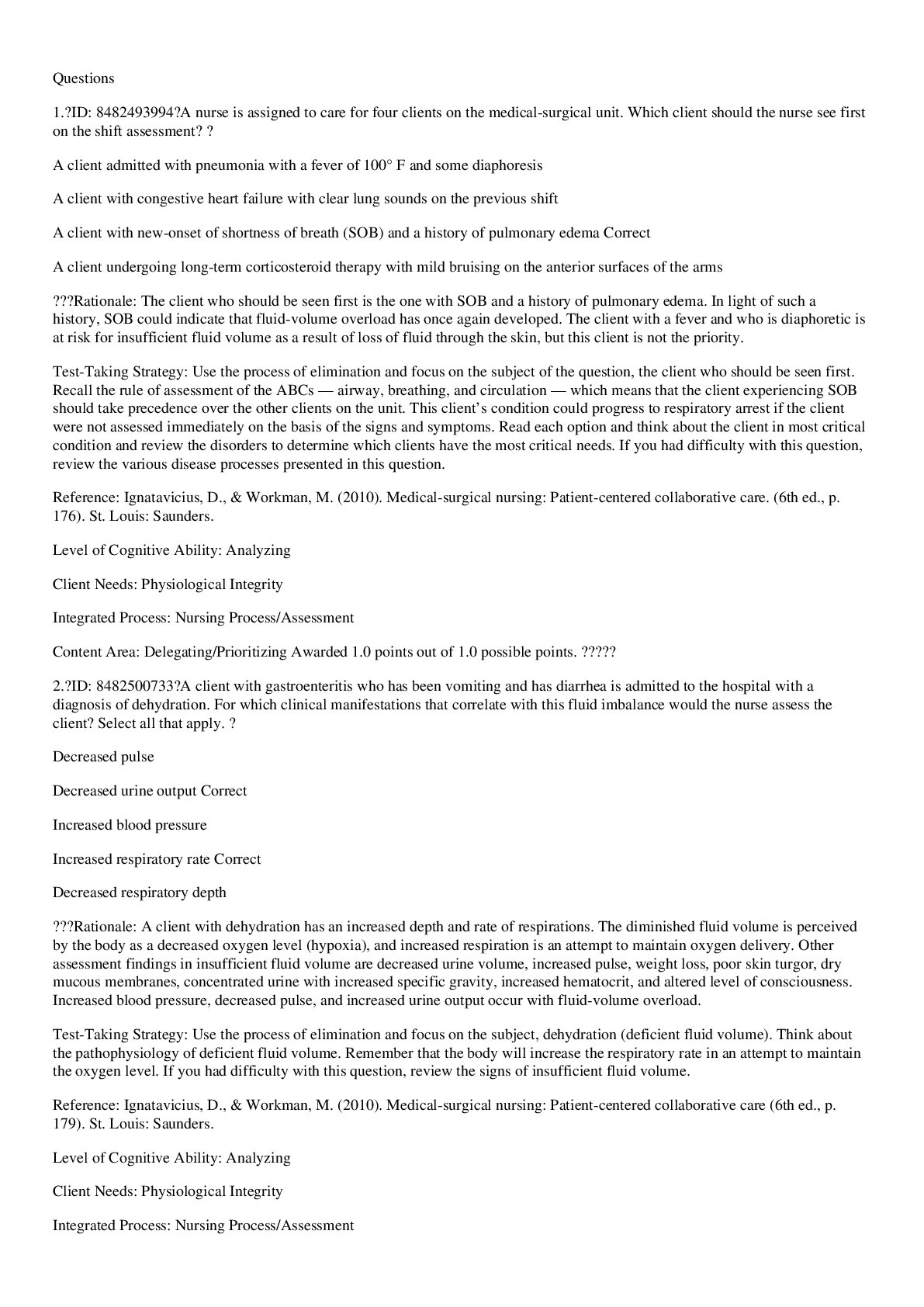

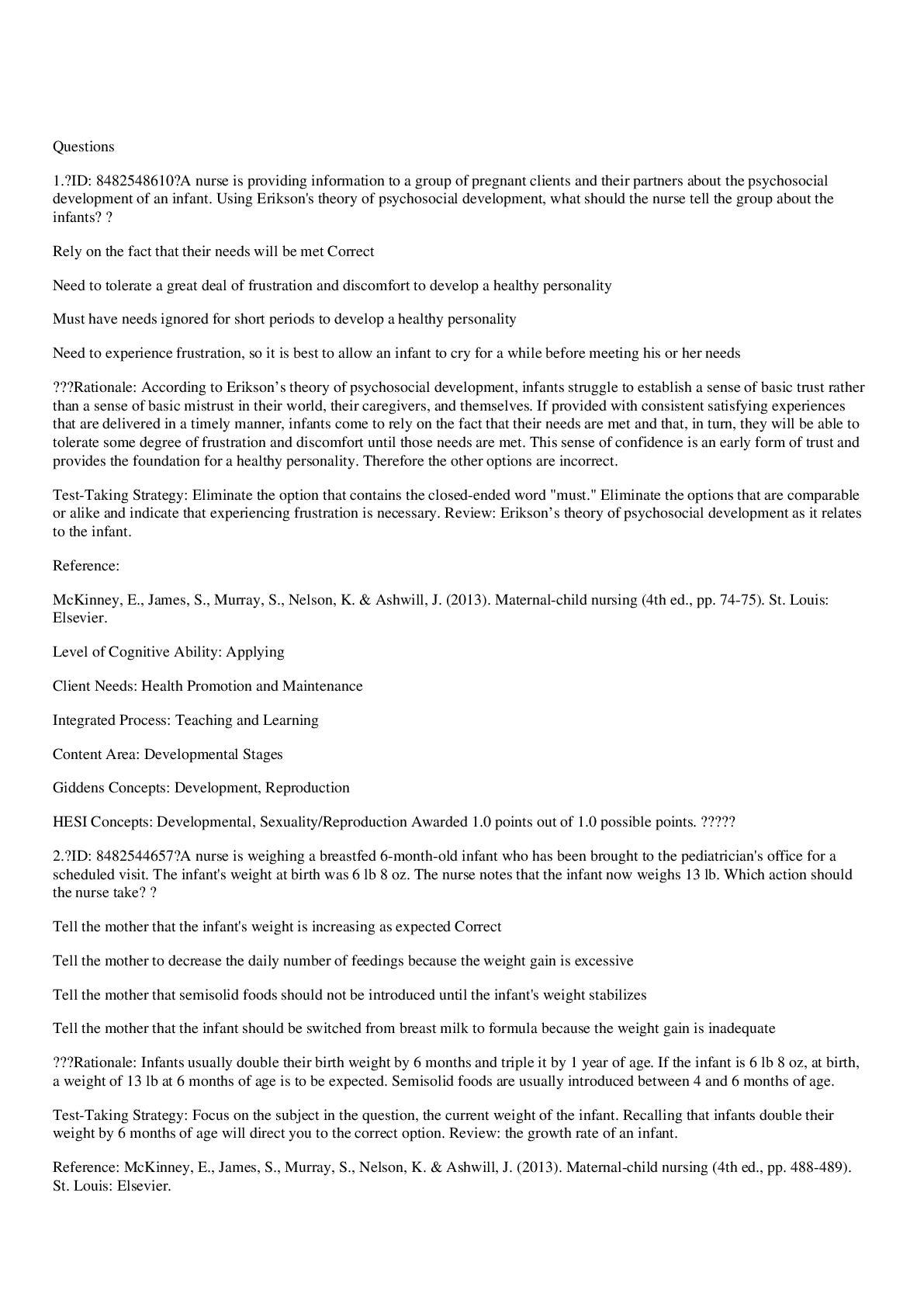
.png)




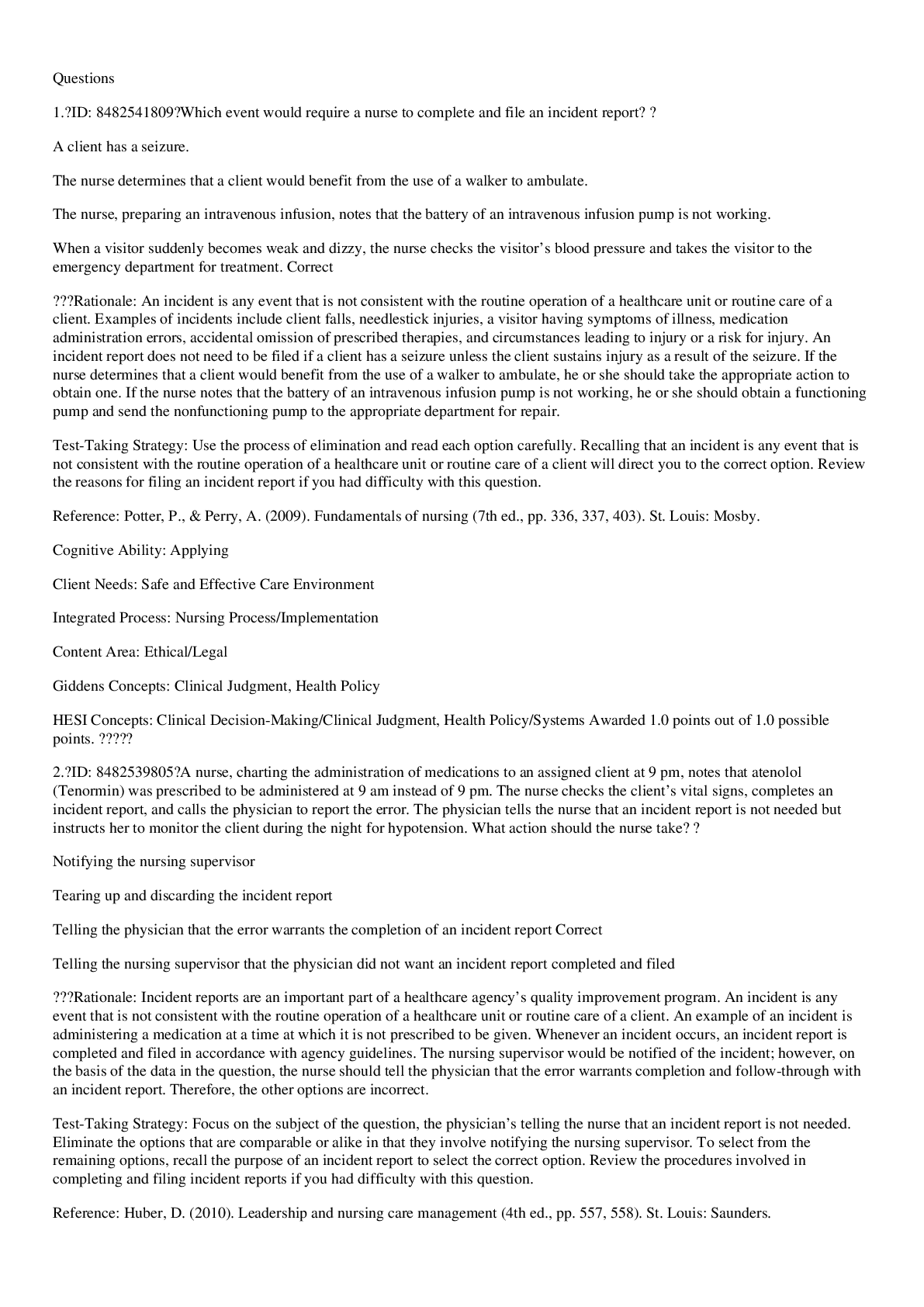

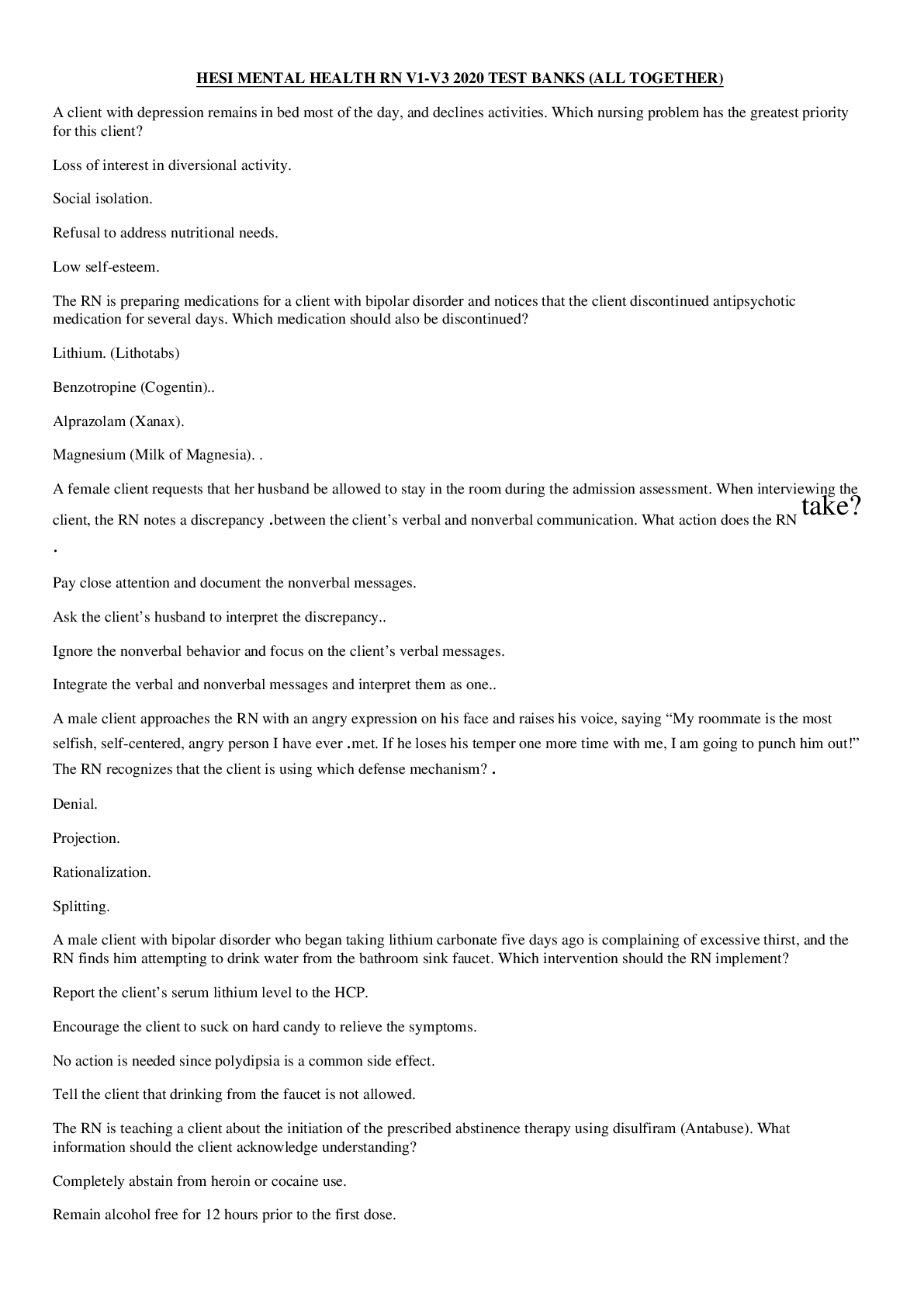

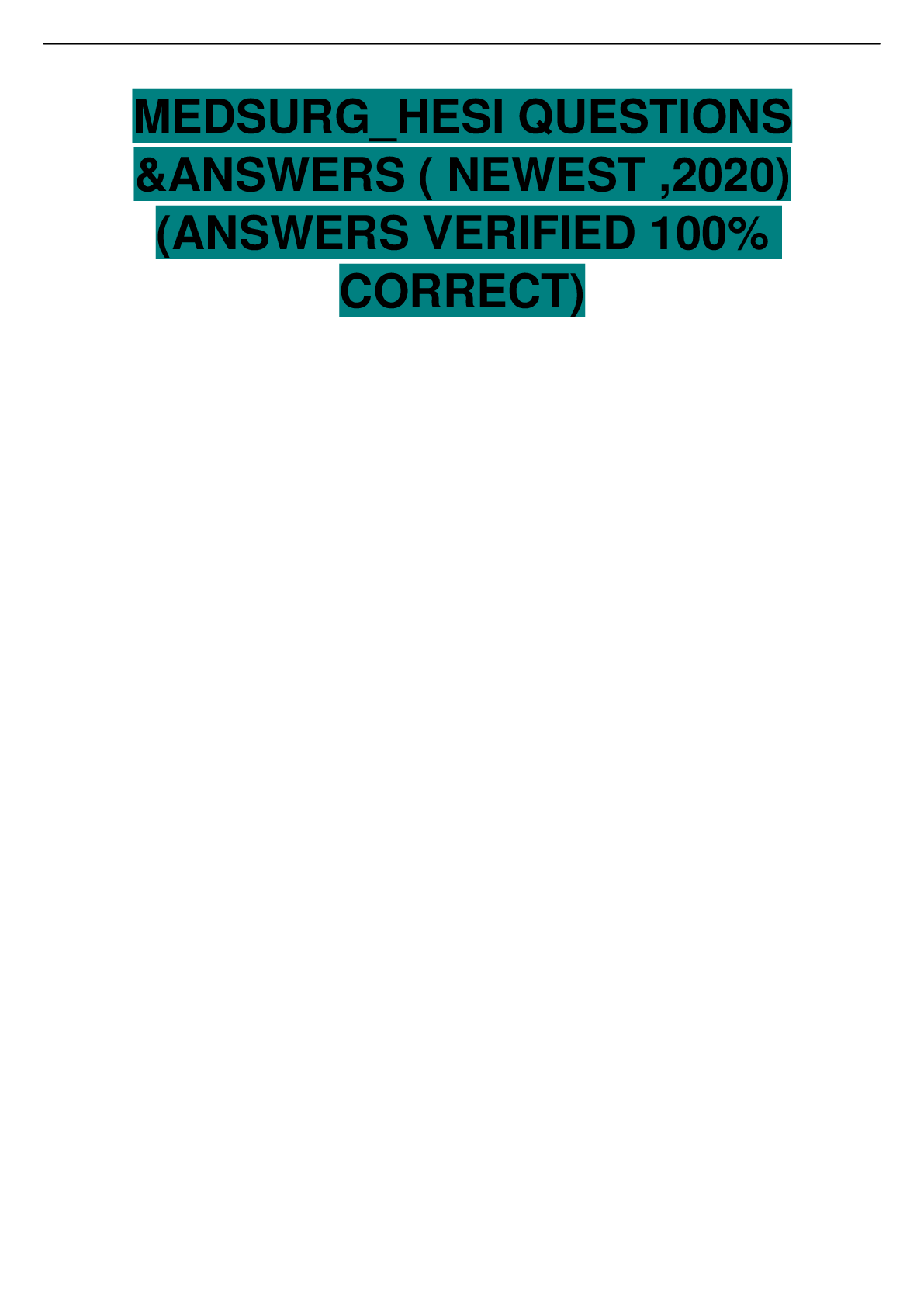
.png)
.png)
.png)






 (1).png)



